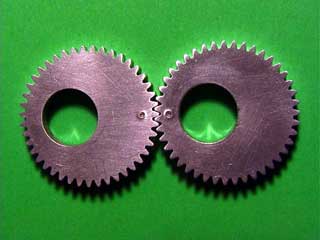Slow Speed Blurred Images
After all the effort we have gone through to make sharper and steadier images,
the latest thing is to degrade the image for a different look. Here are some
things to think about if you want a blurred image.
The subject or some part of it has to move in relation to the frame during the
exposure. If the camera is panning perfectly with a moving subject, it will
be sharp at any frame rate and the background will be blurred.
Shooting at slower frame rates will give you longer exposures and more blur
of course. Multiple printing of each frame will restore the correct screen time.
In video transfer they say "transfer at 6 frames" if the film was shot at 6
frames per second. Each film frame is looked at 4 times. Selecting certain frames
shot at 24 frames and multiple printing them will also give a stepped feeling,
but there will be little blur. Now video transfers can take information from
frames before and after and create in between frames with information from both
frames. It helps smooth out the jerky effect.
Still tests with one hour processing and equivalent shutter speeds will give
you a basis to think about before you shoot film and have to wait for it to
come back. Put the camera on a head and operate it like you will operate the
film camera.
Video gives what a 359-degree shutter would give on film. There is maximum blur
if every frame is used. You get no strobbing in video because no information
is lost between frames while the film is pulled down in a film camera.
To see what your final image will be is easy with a Sony VX1000, Canon Optura
and many recent digital cameras. They have a slow speed shutter feature that
allows lower shutter speed shooting and play back at 30 frames per second.
A film camera with more than a 230-degree shutter will prevent strobbing. There
is no 24 FPS camera that will do that, but camera drives can be modified to
accomplish this at slower frame rates. Acceleration and deceleration problems
make mechanical drives difficult. Stepping motor drives make it easy at slower
frame rates.
The Norris motor will also accomplish long exposures and fast pull downs. His
1990 unit is limited to a one-second exposure with a 1/16 sec. pull down. (The
motor is reversed and the functions reversed) His new control will hopefully
allow more flexibility for this application.
Here is a 270-degree shutter drive modification that works well on Mitchells
and Arri IIC's. I have never run it above 12 frames per second. I have tried
modified off center gear belt modifications that may work, but I was never happy
with them. The elliptical gears for this drive are not very popular anymore,
but can be specially made by Sterling Instrument and maybe others.

Elliptical Gears
© Copyright 1999-2004 Ron Dexter. All Rights Reserved.

